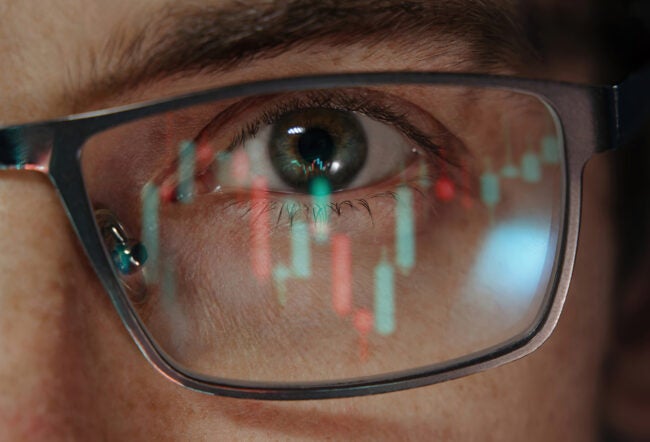Silicon Valley Bank (SVB), founded in Santa Clara, Calif., nearly 40 years ago by former Bank of America executives to focus on technology startups, collapsed on March 10 after a run on its deposits over fears that it was running out of money to meet its liquidity requirements. SVB’s failure triggered fears of contagion across the banking system, and over the weekend, New York-based Signature Bank also went under.
The U.S. government and the Federal Reserve acted swiftly to fully protect depositors of both banks. Meanwhile, the Federal Deposit Insurance Corporation (FDIC) set up bridge banks to carry on the operations of both SVB and Signature Bank while it looked for buyers through auctions. Two days before SVB’s collapse, Calif.-based Silvergate Capital, which caters to the crypto industry, announced it was shutting down, and that it would repay its depositors.
Between the three banks, investors have lost a total of $72 billion in market capitalization, according to a Wall Street Journal report. Bank stocks across world markets, including those of JPMorgan and Citigroup, have lost billions in value in the wake of the bank failures, and another bank — San Francisco-based First Republic Bank — looked precarious as its share price tanked.
SVB had been a star performer in recent years, growing its asset base during the pandemic to $212 billion. It became the largest Silicon Valley bank by deposits and the 16th largest in the country. It had parked some of its deposits in bonds, which had lost value as a consequence of the Fed increasing interest rates to tame spiraling inflation. Meanwhile, SVB’s deposit growth had turned negative in the last three quarters, forcing it to sell its bond holdings at a huge loss. After it announced last Wednesday that it had to raise fresh capital, its “investors completely freaked out,” as a Wall Street Journal report put it, causing the run on its deposits.
Beyond the immediate fallout, the SVB failure has brought scrutiny to the Fed’s hawkish interest rate approach. But the larger lesson is for U.S. bank regulators to find ways to plan for the failure of midsized banks, especially after the 2008 Dodd-Frank Act was diluted to benefit all but the biggest banks, according to The Economist. The SVB episode is not a failure of the financial system, it said, noting that it was more a case of a bank’s bad bet on interest rates staying low.
Wharton finance professor Itamar Drechsler joined the Wharton Business Daily show on SiriusXM to discuss what led to the collapse of SVB and the questions it raises for banks, depositors, and regulators going forward.
Transcript
Wharton Business Daily: Could you please share your thoughts on what occurred with the failed banks, specifically Silicon Valley Bank, and the potential impact that we might see longer term.
Itamar Drechsler: SVB had a very big runup in the amount of deposits in the previous two years. These were mostly business deposits in corporate checking accounts from tech startups, VCs and SPACs (special purpose acquisition vehicles). That sector shrank a lot recently as interest rates rose. [Consequently], SVB was essentially losing customers. They were paying low interest rates on their deposits – similar to those on checking accounts – and if they wanted to replace them, they’d have to pay competitive rates, or a lot more.
SVB was unable to finance the long-term assets that it had bought [from its deposits]. Since those assets were bought before interest rates went up, they fell in value, and created a hole in its balance sheet. When it reported [its latest quarterly] earnings [on March 8], its depositors were worried, especially since large deposits aren’t [sufficiently] insured and are beyond the FDIC limit. That created a fear, and a run on uninsured deposits at many other banks.
Wharton Business Daily: How much did the rise in interest rates over the last year factor into this?
Drechsler: It factored in two ways. I want to be clear that it is not the case that because banks in general borrow short and lend long, when interest rates go up they necessarily blow up. We’ve gone through cycles like this many times. With some exceptions, in general, it does not cause things to blow up because banks know this is coming. Even though they own long-term assets whose value goes down when interest rates go up, on the other side, their deposit franchise becomes more valuable because they’re able to charge people a big spread on the deposits. When interest rates go up, they make money off of that because they don’t pay much interest on deposits, and that offsets the loss on the long-term assets.
SVB, however, did way too much of this. They bought very long-term stocks. And on the other hand, they did not expect their VC clients to [withdraw from] their checking accounts at the rate that they were. It was a case of going up fast and going down fast, and both sides have to do with interest rates. The VC sector has shrunk, probably at least in some respects because interest rates have gone up. So SVB got hit by interest rates on both sides of its balance sheet. But that’s not to say that every bank is in trouble. This is what they do – they borrow short, lend long.
Wharton Business Daily: How did the San Francisco Fed conduct itself in its oversight of banks, specifically SVB?
Drechsler: I have to say the caveat [that] I don’t know. I think now it is coming out. You can see in [SVB’s] public filings that the mortgages they bought and their overall portfolio, are longer-term compared to a normal bank. If a normal bank holds securities like mortgages that are about seven years on average in duration and maturity, they were closer to 15 years at SVB. [The regulators] knew that.
On the flip side, SVB’s accounts were not insured. Generally, regulators such as the FDIC place a premium on having retail insured deposits that are not going to leave in a hurry. I’m not an expert on what exactly [the regulators] were doing there, but I am a little surprised. It’s not like you couldn’t see this at all, if you’re looking for it.
Wharton Business Daily: Even though you said that this shouldn’t be a concern, many other regional banks are being very watchful of the potential movement of funds by their depositors. They also have to do a deeper dive into their operations [to look for] other potential concerns.
Drechsler: They know [the consequences of] borrowing short and lending long. If your depositors run, then it’s like you losing your business franchise. What makes the business [work] is that [after] you attract depositors, they don’t really leave [in a hurry]. You provide them services, and in return they accept interest rates on deposits that are below competitive rates. Now, if they leave, it’s because you really lost the base of your business. All bets are off in that case. When you fear of a run on deposits and they’re not insured, it’s in everybody’s interest to just run for the hills. At that point, it just destroys the business of the bank.
Wharton Business Daily: How will this latest experience of SVB and other banks lead to a better understanding of what the banking sector needs to think about longer-term?
Drechsler: Deposit accounts that are over the insurance limit will be broken up and distributed across banks so that they’re within by the insurance limit. We will see more of that. (The FDIC protects individual deposits of up to $250,000 per depositor, per insured bank, for each account ownership category.)
I think we’re going to move more toward the direction of more insurance [for deposits]. At the same time, we could expect more regulation of what you can do with those insured deposits. With social media, when people see danger, they’re very coordinated, and stuff happens immediately.
Wharton Business Daily: There’s also the question about whether there should have been some government bailout, especially with SVB and maybe even Signature Bank?
Drechsler: They did and didn’t have a bailout. The sense in which SVB definitely had a bailout is because 95% of its deposits were over the insurance limit and they were made whole. The FDIC was not obligated to do that. They chose to do that bailout because they got scared that it might cause runs at other banks. The bond holders and equity holders got wiped out, so it’s not a bailout to them.
Wharton Business Daily: Will this episode change the regulatory landscape, and maybe prompt a re-think on some policies?
Drechsler: On this dimension of uninsured deposits, I think we’re going to get more regulation. That’s the direction it will go, definitely.
Wharton Business Daily: Do you think that regulation worked in this instance to prevent the possibility of further contagion?
Drechsler: The blanket, uninsured deposit bailouts (for SVB and Signature Bank) has not been said formally for other banks. But it looks like people are gaining confidence again. But it’s just an ex-post patch-up job. [Protection for] uninsured deposits has to be reckoned with.
Wharton Business Daily: Does this also impact the FDIC in terms of how it operates and how it looks at these potential issues moving forward?
Drechsler: Yes. The FDIC’s regulations gave a premium for retail deposits – not the kind that will run away real fast. Either we’re going to insure the rest of them, or we’re going to penalize them more. [In other words, we will] either drive them into insured accounts, or out completely.
Wharton Business Daily: Could you share your overall thoughts on what we’ve seen play out and how you think this will impact banking and finance moving forward?
Drechsler: I think the deeper and harder question is, do we have uninsured deposits or don’t we? The argument was, we will always insure retail depositors, because they don’t have the time or energy or sophistication to pay attention to how healthy their bank is. More than a 100 years ago [after] the Federal Reserve was set up, we created deposit insurance (the FDIC was created in 1933), and that stopped the constant bank runs and depressions that followed from that.
For whatever reason, now, there are a lot of uninsured deposits, because deposits have grown so much. Either those move into smaller accounts and become insured, or we have to somehow reckon with them. We either say “You’re not going to be protected” – that doesn’t seem to work, ex-post – or we protect them, but then we put limits on what you can do with the money you get from there. I don’t know what the answer will be going forward, but it’s going to have to be dealt with.



